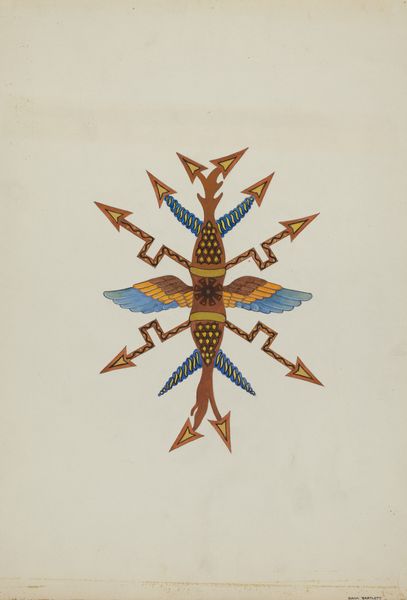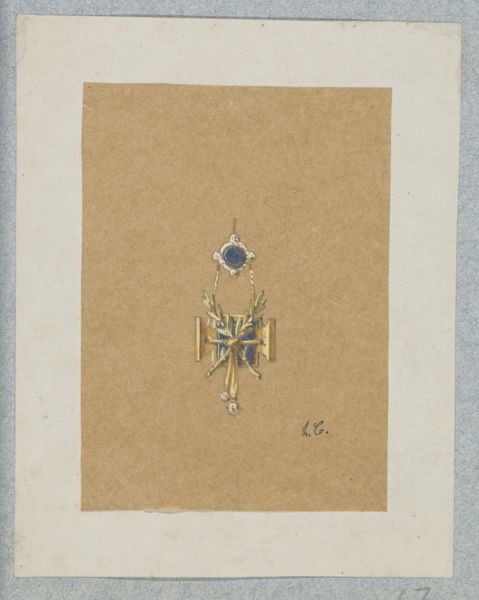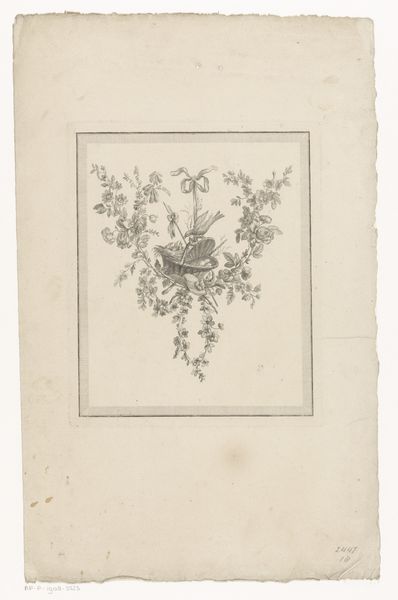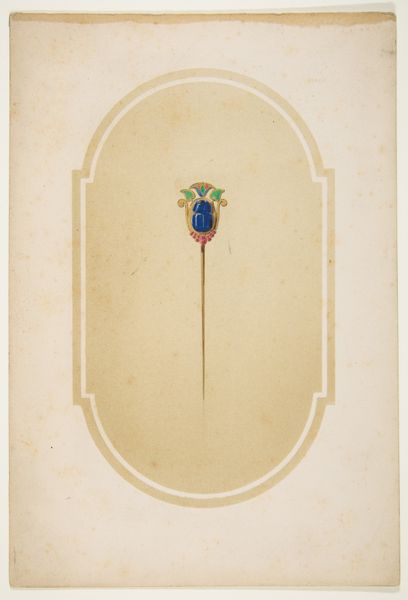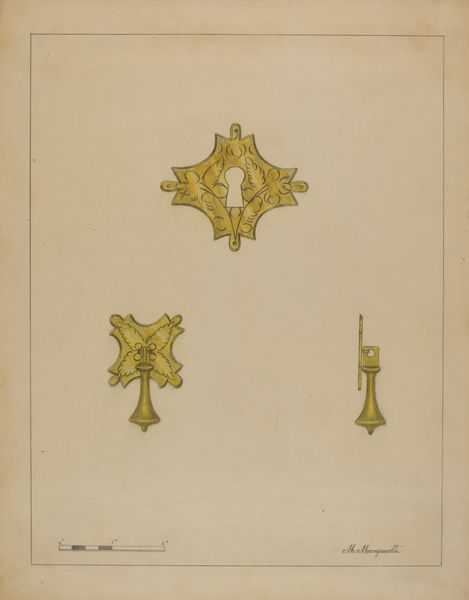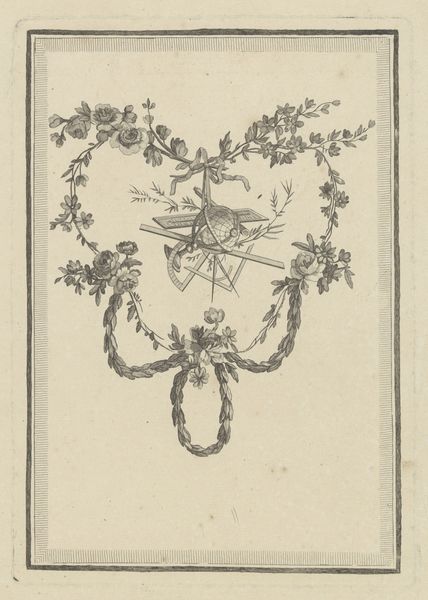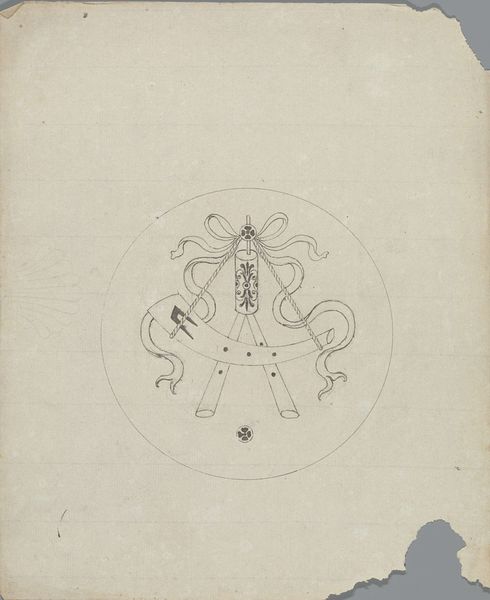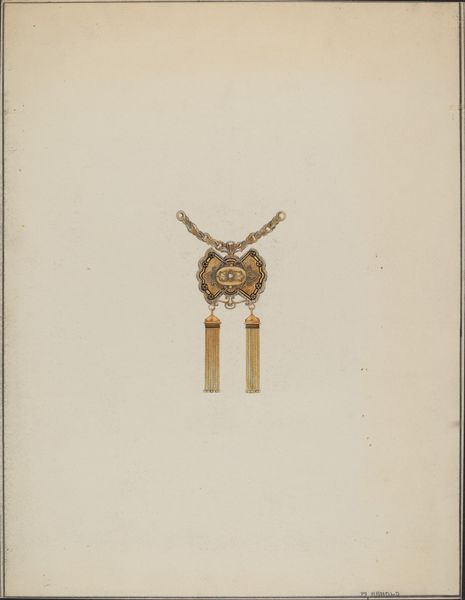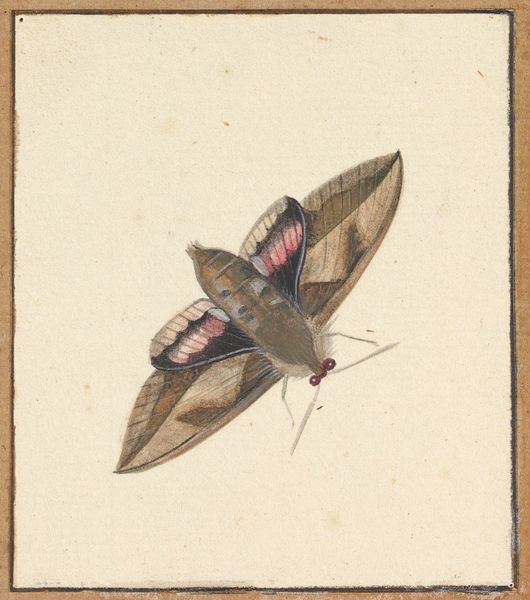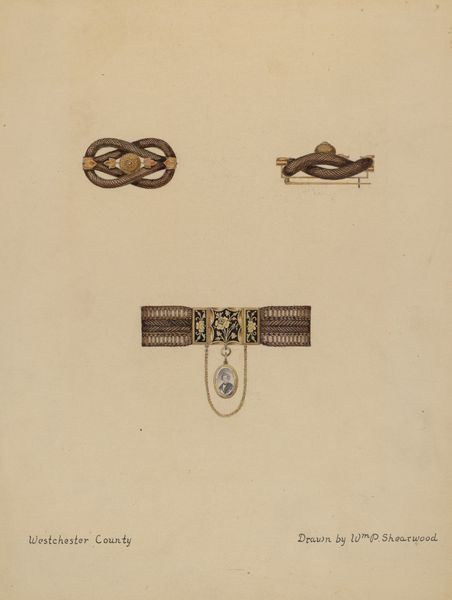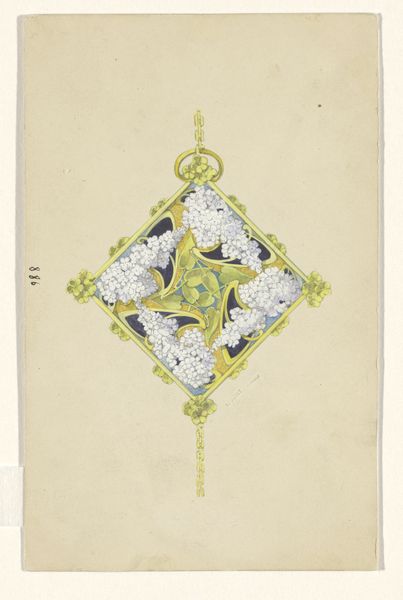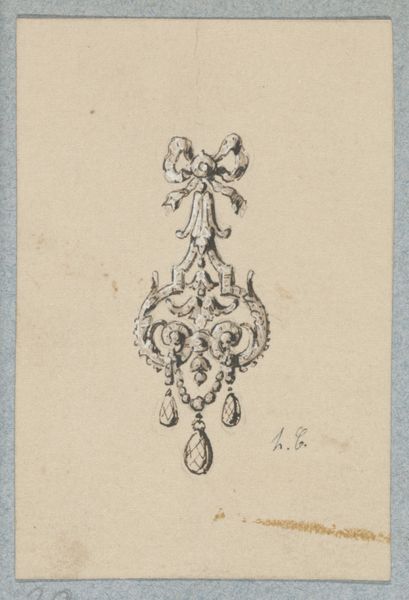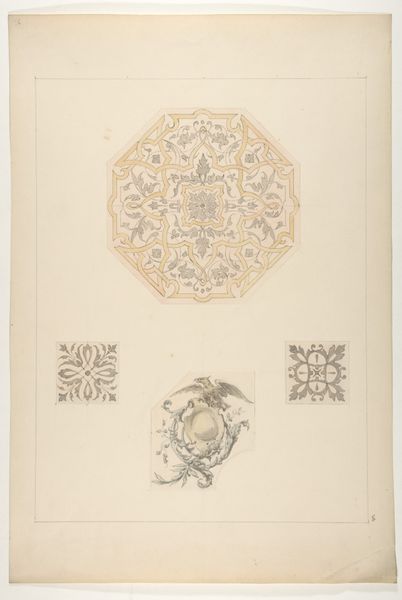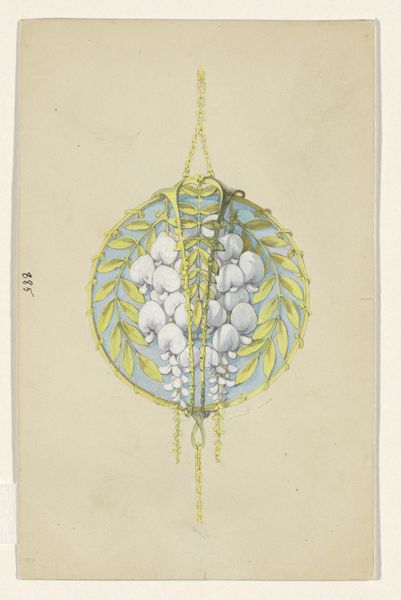
Ontwerp voor een hanger met een scarabee, slangen en lotusbloemen, van geëmailleerd goud met een scarabee c. 1905
0:00
0:00
drawing, watercolor
#
drawing
#
water colours
#
ancient-egyptian-art
#
watercolor
#
orientalism
#
watercolour bleed
#
watercolour illustration
#
watercolor
Dimensions: height 137 mm, width 90 mm
Copyright: Rijks Museum: Open Domain
Curator: Well, isn't this charming? I'm immediately drawn to the delicate lines and the almost dreamlike quality of the watercolor. Editor: It’s a very interesting drawing from around 1905. Paul Louchet conceived it as "Design for a Pendant with Scarab, Snakes, and Lotus Flowers, Made of Enamelled Gold with a Scarab". It shows clear influences of both the Art Nouveau and the fascination with ancient Egypt prevalent at the time. Curator: Ancient Egypt! That explains the scarab, doesn’t it? I find it so poetic—the scarab, with those stylized wings, suspended from what appear to be lotus blossoms. It's as if Louchet captured a moment of mythical transformation. A strange mix between dark and joyful. Editor: Yes, the scarab was deeply symbolic in ancient Egyptian culture, representing rebirth and regeneration, while lotus flowers symbolize creation and sun. The snake motifs curling around the scarab’s wings also have a dual representation of protection and regeneration in ancient Egyptian traditions. And that’s also something that the Art Nouveau took. The early 20th century was definitely an important point where those non-european cultural products became fashionable. Curator: Protection and regeneration. Hmm... that explains the intuitive appeal of the design—the scarab as a tiny promise of renewal! It is hard not to think of it as some form of escapism, an urge to believe something, against a quite industrial reality at that time. Editor: I agree about the potential interpretation as an escapist piece, but at the same time, this kind of work can be quite ambiguous. Even if Louchet didn’t do it consciously, it reminds us how the rediscovering and reshaping of "exotic" traditions were strongly enmeshed with the construction of national identities and colonial agendas. We could debate how Louchet used some motives as personal "regeneration" by copying Egyptian and African works, without any considerations of how those people live in real life. Curator: It gives one a lot to think about, especially how design and visual language can be as loaded as any written or spoken expression. But at the end, despite the sociohistorical considerations, Louchet shows here an elegant idea. It is what fascinates and attracts me the most. Editor: Right, and remembering the cultural contexts only contributes to see those details in their complexities. This work shows how history always leaves marks.
Comments
No comments
Be the first to comment and join the conversation on the ultimate creative platform.
